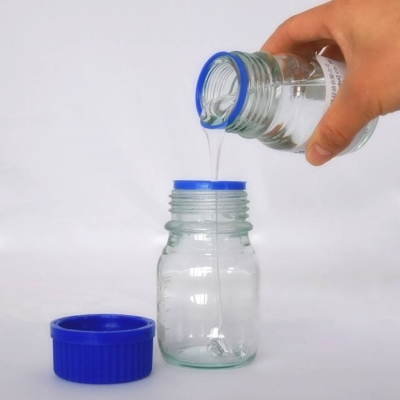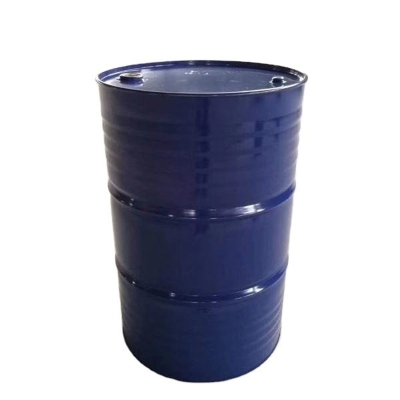-
Categories
-
Pharmaceutical Intermediates
-
Active Pharmaceutical Ingredients
-
Food Additives
- Industrial Coatings
- Agrochemicals
- Dyes and Pigments
- Surfactant
- Flavors and Fragrances
- Chemical Reagents
- Catalyst and Auxiliary
- Natural Products
- Inorganic Chemistry
-
Organic Chemistry
-
Biochemical Engineering
- Analytical Chemistry
- Cosmetic Ingredient
-
Pharmaceutical Intermediates
Promotion
ECHEMI Mall
Wholesale
Weekly Price
Exhibition
News
-
Trade Service
With the rapid development of new energy vehicles, the cathode material market as a whole will show a rapid growth trend
in 2021.
According to the survey data of the Lithium Battery Research Institute (GGII) of the High Industrial Production Research Institute, the shipment volume of China's cathode material market in 2021 was 1.
13 million tons, an increase of 116%
year-on-year.
Entering 2022, the high prosperity of new energy vehicles continues, the penetration rate continues to increase, and the energy storage battery project accelerates the landing, which has spawned a strong demand for
lithium battery materials.
Among them, cathode materials as one of the key core materials, supporting needs are also greatly improved
.
In this context, China's cathode materials related major enterprises are stepping up the pace
of capacity expansion.
Related project dynamics since 2022 (incomplete statistics):
On September 19, Shenzhen German Nano 110,000 tons / year new phosphate cathode material production base project was officially put into operation
.
On September 16, Jiangsu Aerospace Lithium Battery Technology 50GWh lithium battery and material integration industrial base project was officially signed
.
The total investment of the project is more than 26 billion yuan, and the main products are electric cells as the core, covering the upstream supporting materials industries
such as cathode materials, anode materials, diaphragm materials, electrolyte materials and so on.
On September 8, Guangdong Dongguang Technology issued an announcement
on the investment and expansion of the 50,000 tons/year lithium ion battery cathode material lithium iron phosphate project.
On August 21, Shandong Chuangpusi New Energy 180,000 tons / year lithium iron phosphate cathode material project officially launched the instrument
.
On August 14, Xilong Science issued an announcement that it intends to privately issue no more than 176 million shares, and the fixed increase in capital will not exceed 1 billion yuan, which will be used for high-end fine chemical technology transformation projects, 50,000 tons / year lithium iron phosphate cathode material project and supplementary working capital projects
.
On June 23, Tianyuan announced that it intends to issue no more than 30% of the shares, and the capital to be increased will not exceed 2 billion yuan for the production project
of 100,000 tons / year lithium iron phosphate cathode materials.
On June 13, Zhenhua New Materials issued an announcement that it plans to raise no more than 6 billion yuan, and plans to use 4.
5 billion yuan for the construction project of cathode material production line (Yilong Phase III) after deducting related issuance fees, and 1.
5 billion yuan to supplement working capital
.
The total investment of the project is 6.
245 billion yuan, after the completion of the project, it will add 100,000 tons / year cathode material capacity, mainly for the production of high nickel, medium and high nickel and medium nickel ternary cathode materials, and compatible with the production of
sodium ion battery cathode materials.
On June 8, Hefei Guoxuan Kehong New Energy Technology 200,000 tons / year high-end cathode material project was officially put into operation
.
The main products of the project are the high-performance lithium iron phosphate cathode material independently developed by Guoxuan Hi-Tech to meet the energy density of the single cell ≥ 210Wh/kg, which will form a production capacity of 200,000 tons/year after all of them reach production
.
On May 30, Jinpu Titanium Industry issued an announcement that it intends to build a new energy battery material integration project
such as 200,000 tons/year battery-grade iron phosphate and 200,000 tons/year lithium iron phosphate in the Anhui (Huaibei) new coal chemical synthetic materials base.
On May 30, Zhejiang Huayou Cobalt announced that its holding subsidiary, Bamo Technology, intends to subscribe for a 49% stake
in LGBCM Co.
, Ltd.
for 51.
4 billion won (about 275 million yuan).
In addition, LGBCM plans to build a production capacity of 66,000 tons/year ternary cathode materials, with a total investment of 437.
1 billion won (about 2.
337 billion yuan
).
On May 10, Jiangsu Longpan Technology announced that it intends to jointly invest 900 million yuan with Tangshan Xinfeng Lithium Industry to invest and build a 30,000 tons/year lithium hydroxide/lithium carbonate project
in Hubei Province or Tangshan City, Hebei Province.
On May 7, Pengbo New Materials 70,000 tons / year cathode material project officially started
.
On February 25, the foundation stone laying ceremony of Fengyuan (Yunnan) Lithium Energy Technology Co.
, Ltd.
200,000 tons/year lithium battery high-energy cathode material project was held
in Hongta Industrial Park.
On February 21, Huayou Cobalt issued an announcement that the total amount of funds to be raised is 7.
6 billion yuan, which will be used for 50,000 tons/year high-nickel power battery ternary cathode material, 100,000 tons/year ternary precursor material integration project, and 50,000 tons/year high-performance power battery ternary cathode material precursor project, as well as supplementary working capital
.
On January 6, Shenzhen German Nano issued an announcement that it intends to build a "new phosphate-based cathode material production base project with an annual output of 330,000 tons"
in the Qujing Economic and Technological Development Zone.
Upstream, middle and downstream enterprises in the industrial chain
The upstream of the cathode material industry chain is composed of bulk chemicals
.
The main raw materials for the production of cathode materials include nickel sulfate, manganese sulfate, cobalt sulfate, metal nickel, battery-grade lithium carbonate, battery-grade lithium hydroxide, the main accessories include caustic soda, ammonia, sulfuric acid, etc.
These raw and auxiliary materials are mainly bulk chemicals, and the market supply is relatively sufficient
.
It is worth noting that the prices of sulfate (nickel sulfate, cobalt sulfate and manganese sulfate) and lithium salts (lithium carbonate and lithium hydroxide) in the above chemicals have fluctuated significantly in the past, and prices may change by more than
10% in the middle of the year.
Upstream suppliers include Grimme, BHP (BHP, Australia), Marubeni (Marubeni, Japan), Tianqi Lithium, etc.
, of which Grimme mainly sells sulfate cobalt, nickel sulfate and other sulfates, BHP Billiton mainly sells metal nickel powder, and Tianqi Lithium mainly sells lithium salts such as lithium carbonate and lithium
hydroxide.
The main energy consumed in the production process is electricity, which is supplied directly by the local power supply
department.
The middle reaches of the cathode material industry chain are composed
of cathode material manufacturing enterprises.
At present, the main players in the industry include Dangsheng Technology, Long-term Lithium Branch, Zhenhua New Materials, Xiamen Tungsten New Energy under Xiamen Tungsten Industry, Shanshan Energy (Shanshan Holdings 69%), Ronbay Technology, etc
.
It should be noted that some of the main players have a central enterprise background, such as Dangsheng Technology is a subsidiary of Beijing Minmetals Technology Group Co.
, Ltd.
, Long-term Lithium is a subsidiary of China Minmetals Group Co.
, Ltd.
, and Zhenhua New Materials is a subsidiary of China Electronics Information Industry Group Co.
, Ltd.
At present, the cathode material industry has not yet formed an oligopoly competition pattern, and the market share of the above six players is not much
different.
The downstream of the cathode material industry chain is composed of
lithium battery manufacturers.
At present, well-known enterprises in the lithium battery industry include CATL, BYD, Fu Neng Technology, New Energy Technology (ATK, Hong Kong), Panasonic (Panasonic, Japan), Samsung SDI (Samsung SDI Co, South Korea), LG Chem (LG Chem, South Korea), Tianjin Lishen, BAK Power, Envision Group, etc
.
From the perspective of shipment analysis, the current global lithium battery industry is a three-legged situation between China, Japan and South Korea, the international giants are Panasonic, Samsung SDI and LG Chem, the first echelon in China is Ningde Times and BYD, and the second echelon is Fu Neng Technology, Tianjin Lishen, BAK Power, Envision Group, etc
.
Lithium iron phosphate and ternary cathodes are growing rapidly
As the core key material of lithium battery, the characteristics of the cathode material directly determine the energy density, cycle life and safety performance of the lithium battery, which in turn affects the comprehensive performance
of the battery.
The cathode material accounts for about 43% of the material cost of the lithium battery, and its cost directly determines the overall cost of the lithium battery, which plays a decisive role
in the lithium battery.
Lithium battery cost ratio
Source: VisualCapitalist, Guotai Junan Securities Research
The common cathode materials of lithium batteries mainly include lithium cobalt oxide (LCO), lithium manganese oxide (LMO), lithium iron phosphate (LFP), ternary materials (NCM/NCA) and so on
.
Among them, lithium iron phosphate cathode and ternary cathode are mainly used in power lithium batteries, driven by the development of new energy vehicles in recent years, the demand is growing rapidly, and the total proportion of cathode materials is currently more than
70%.
Classification of cathode materials
Source: Gaohe Investment Research Center
In the shipment volume of China's cathode material market in 2021, the shipment of lithium iron phosphate cathode material was 480,000 tons, an increase of 258% year-on-year; Ternary cathode material shipments of 430,000 tons, an increase of 80% year-on-year; Shipments of lithium cobalt oxide cathode materials were 106,000 tons, up 31% year-on-year; Shipments of lithium manganate cathode materials were 109,000 tons, up 60%
year-on-year.
From the perspective of the proportion of product shipment structure, the market share of lithium iron phosphate cathode materials in the field of cathode materials will rise from 24% to 43% in 2021, and the market share of ternary cathode materials will decline slightly, and the market share will drop from 46% to 38%.
According to the research report of Guosen Securities in July, the global demand for lithium iron phosphate batteries will reach 710GWh in 2025
.
According to the single consumption of 0.
25 million tons/GWh lithium iron phosphate, the demand for lithium iron phosphate cathode materials is expected to reach 1.
8 million tons
in 2025.
Industrial development still faces three major risks
According to the research of TrendForce Jibang Consulting, in recent years, the proposed expansion projects announced by global cathode material manufacturers are concentrated in China and South Korea, with a planned total production capacity of more than 11 million tons / year, of which the planned production capacity of lithium iron phosphate cathode accounts for 64%.
At present, the cost advantage of lithium iron phosphate is emerging, ternary materials are developing to the trend of high nickel and low cobalt, new materials are gradually receiving market attention, and different technical routes have their application areas
.
Although there are many new entrants in the industry, the market concentration of cathode materials in China is still at a low level
.
On the one hand, downstream power battery manufacturers will produce some cathode materials for product quality, supply chain guarantee and other considerations; On the other hand, upstream raw material manufacturers and recycling enterprises have resource advantages, and will also be laid downwards, squeezing the market space
of cathode material manufacturers to a certain extent.
According to EV Tank data, the overall market concentration of cathode materials in 2021 is still low, the market share of the top ten companies is less than 50%, and the
market pattern has not yet formed.
China's cathode material market pattern in 2021
Source: GGII, BOC Securities, Gaohe Investment Research Center
In this context, the development of the domestic cathode material industry is facing the following risks:
First, the technical barriers to the production of cathode materials are relatively low, the phenomenon of industrial homogenization is serious, and the bargaining power of strong lithium battery companies may be insufficient
.
The production of cathode materials is essentially a process in the industrial chain of lithium batteries, mainly for the mixed sintering processing
of various types of metal salts.
The process technology is relatively mature, the technical threshold is not very high, and the differences between the products of various enterprises are mainly reflected in the refined management and process control
.
Second, cathode material enterprises are in a period of rapid expansion of production capacity, if it cannot match the growth rate of downstream demand, it is easy to form a stage of overcapacity
.
At present, driven by the strong demand of the downstream market, the major cathode material companies are actively expanding production capacity, especially some strong chemical companies are also actively laying out the lithium iron phosphate market in the near future, and the production capacity under construction is quite large
.
However, the growth of the new energy automobile industry is not linear, and there may be a phased stagnation
.
Therefore, the slowdown or less than expected growth of the downstream industry may cause a phased overcapacity
of cathode materials.
Due to the inherent lack of bargaining power of lithium battery companies in the face of cathode material enterprises, once there is overcapacity, their profit space is bound to face the risk of
being squeezed.
The third is the risk
of switching the technical route of cathode materials.
At present, the cathode materials used in domestic power lithium batteries mainly include lithium iron phosphate and lithium ternary technical routes
.
In the early promotion of new energy vehicles in China, lithium iron phosphate dominated, and later due to the advantages of ternary lithium in energy density and low temperature adaptability, it began to gradually replace lithium iron phosphate to become the mainstream
.
However, since 2021, the proportion of lithium iron phosphate market has surpassed, and it has once again become the mainstream of the market, and the proportion of ternary yuan has declined, and this technological transformation may cause related companies to bear a lot of losses
.
But it is worth noting that the current ternary lithium battery, lithium iron phosphate battery have no small technical defects, the market for the next generation of lithium battery solid-state lithium battery placed high expectations, although in the short term solid-state lithium battery will not be commercialized, but if it is once large-scale to the market, the existing ternary cathode, lithium iron phosphate cathode enterprises may face a reshuffle
.







